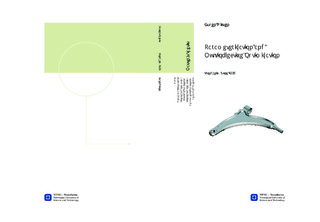Parameterization and Multiobjective Optimization
Master thesis
Permanent lenke
http://hdl.handle.net/11250/241814Utgivelsesdato
2013Metadata
Vis full innførselSamlinger
Sammendrag
This thesis has dealt with the overall process regarding optimization of a controlarm, with a focus on providing a practical guide. The rst chapter explains howto approach these kinds of issues and outlines a strategy for model parameterization.The product requirements has been identied. The overall goal is toreduce weight by 10 % while maintaining the same stiness. Then the mostsuited design expressions has been chosen to ensure the best possible outcomeof the following optimizations.When the optimal parameterization strategy has been chosen the next chapterdeals with an automatic optimization in the internal optimization modulein NX to verify if the criteria related to model parameterization was met. Thisgenerated weight savings of 2,67 % which is a quite good result.The nal chapter regarding multiobjective optimization contains all thebackground with congurations, theory and optimizations done within modeFRONTIER.Five dierent algorithms was tested in modeFRONTIER withdefault preferences and benchmarked against each other. This was done as away to determine their eciency with no prior information that could help theeciency of the algorithms. Two of the best algorithms were chosen for a moreextensive optimization with a subsequent local search to nd out if they couldgenerate better results. The best result generated weight savings of 3,56 %,which was produced by the Hybrid algorithm.
